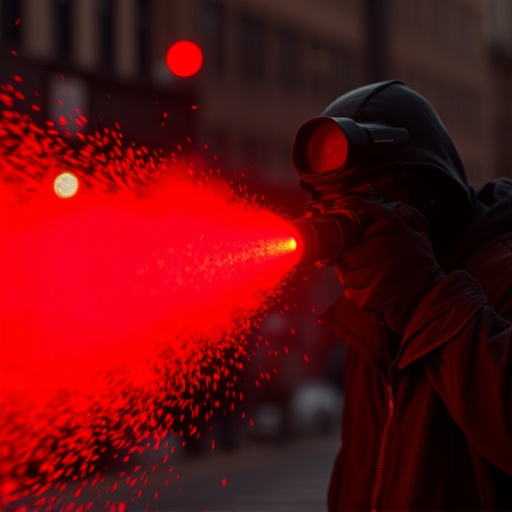Pepper spray, a non-lethal self-defense tool, uses capsaicin to cause temporary blindness and breathing difficulties. While effective in de-escalating conflicts, proper usage techniques are crucial to avoid unintended harm, eye damage, or severe reactions for individuals with respiratory conditions. Misapplication may yield minimal effect, emphasizing the need for quick and accurate targeting on the face. Exploring non-lethal options empowers personal safety without resorting to lethal force, but "can pepper spray blind you?" remains a key consideration due to its potential for severe irritation.
“Discover the power of non-lethal self-defense with an innovative tool gaining traction—the non-lethal inflammatory defense spray. This compact and effective solution offers individuals a sense of security against potential threats. In this article, we demystify its mechanics, focusing on how pepper spray works without causing blindness, despite being a popular keyword search term. We’ll also explore alternative options for personal safety, providing insights for informed decision-making in today’s world.”
- What is a Non-Lethal Inflammatory Self-Defense Tool?
- How Does Pepper Spray Work and Are There Risks?
- Exploring Alternative Options for Personal Safety
What is a Non-Lethal Inflammatory Self-Defense Tool?
A Non-Lethal Inflammatory Self-Defense Tool is a device designed to protect individuals from harm while ensuring the safety and well-being of both the user and potential aggressors. Unlike lethal force, which can cause permanent disability or death, these tools are formulated to incapacitate temporarily without causing serious injury. One common example is pepper spray, which uses capsaicin, the active ingredient in chili peppers, to irritates the eyes, nose, and throat, leading to temporary blindness and difficulty breathing. While pepper spray is a popular option for self-defense, it’s important to note that direct exposure can be dangerous, and users must employ proper technique to avoid unintended harm.
These non-lethal tools are particularly useful in situations where disarming an attacker is not feasible or where the aim is to de-escalate a conflict rather than end it violently. They offer individuals the means to protect themselves and seek help without resorting to fatal force, making them valuable additions to personal safety strategies. In choosing such a tool, understanding its capabilities, limitations, and potential risks—such as how pepper spray can’t “blind” you in the literal sense but causes severe irritation—is crucial for effective deployment and maximum safety.
How Does Pepper Spray Work and Are There Risks?
Pepper spray, a popular non-lethal self-defense tool, uses capsaicin, the same compound that gives chili peppers their heat. When sprayed, capsaicin irritates the eyes and respiratory system, causing temporary blindness, coughing, and difficulty breathing. The effects typically last for around 20 to 60 minutes, providing users with enough time to escape dangerous situations.
While pepper spray is effective as a self-defense mechanism, there are risks associated with its use. It can cause severe discomfort and even damage to the eyes if not applied correctly or at close range. In rare cases, individuals with respiratory conditions or sensitivity to capsaicin may experience more severe reactions. Moreover, pepper spray can also have environmental impacts, as it is difficult to wash off surfaces and can remain active for extended periods, causing disruption in public spaces.
Exploring Alternative Options for Personal Safety
In today’s world, personal safety is a top concern for many individuals. Traditional self-defense methods often involve lethal force, which can have severe consequences and legal implications. This has led to a growing interest in exploring alternative options, particularly non-lethal inflammatory tools designed for self-defense. One commonly discussed option is pepper spray, but it’s important to understand its limitations. Contrary to popular belief, pepper spray is not guaranteed to blind an attacker; its effectiveness relies on the target’s eyes not being protected or washed out promptly.
The appeal of non-lethal options lies in their ability to incapacitate an assailant without causing permanent harm. Pepper spray, for instance, irritates the eyes, respiratory system, and skin, leading to temporary blindness and difficulty breathing. However, users must act quickly and accurately, aiming for the face, as any misapplication may result in minimal effect or even discomfort for the user. Exploring these alternative self-defense tools empowers individuals to take control of their safety while adhering to ethical and legal boundaries.
While pepper spray can be an effective non-lethal inflammatory self-defense tool, it’s crucial to understand its risks, including the potential to cause blindness. Exploring alternative options for personal safety that don’t rely on harmful chemicals is essential, especially when considering the diverse needs and circumstances of individuals. By delving into these alternatives, we can foster a safer and more inclusive environment for everyone.
